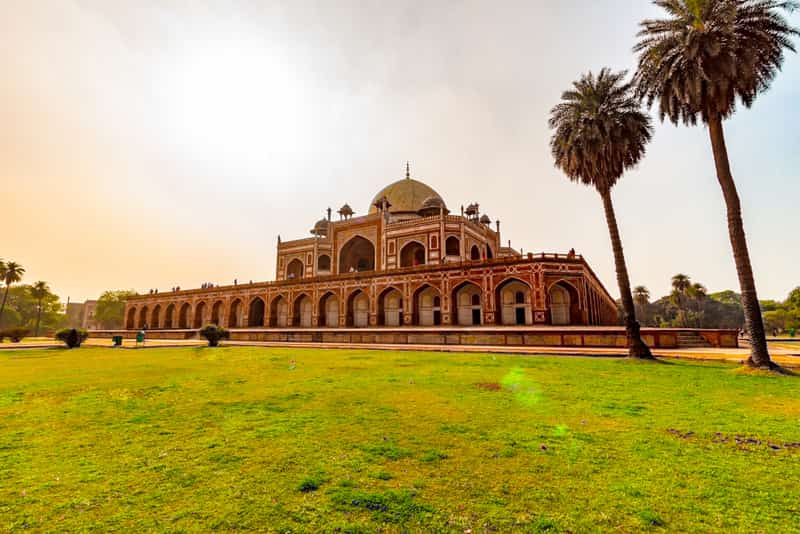
Humayun's tomb, Maqbara-i Humayunis the tomb of the Mughal Emperor Humayun in Delhi, India. Humayun's first wife, Empress Bega Begum (also known as Haji Begum), commissioned it in 1558. Persian architects chosen by her Mirak Mirza Ghiyas and his son, Sayyid Muhammad, designed it. It was the first garden-tomb on the Indian subcontinent. and is close to the Dina-Panah Citadel, also known as Purana Qila (Old Fort), that Humayun found in 1533. It was also the first structure to use red sandstone at such a scale. Besides the main tomb enclosure of Humayun, several smaller monuments dot the pathway. The complex encompasses the main tomb of Emperor Humayun. It houses the graves of Empress Bega Begum, Hamida Begum, and also Dara Shikoh, great-great-grandson of Humayun and son of the later Emperor Shah Jahan. as well as numerous other subsequent Mughals, including Emperor Jahandar Shah, Farrukhsiyar, Rafi Ul-Darjat, Rafi Ud-Daulat, Muhammad Kam Bakhsh and Alamgir II It represented a leap in Mughal architecture, and together with its accomplished Charbagh garden, typical of Persian gardens, but never seen before in India, it set a precedent for subsequent Mughal architecture. The site is on the banks of the Yamuna river, due to its proximity to Nizamuddin Dargah, the mausoleum of the celebrated Sufi saint of Delhi, Nizamuddin Auliya. In later Mughal history, the last Mughal Emperor, Bahadur Shah Zafar, took refuge here, during the Indian Rebellion of 1857, along with three princes, and was captured by Captain Hodson before being exiled to Rangoon